4.1.10 What do the Semi-circular Canals do?

The semi-circular canals convey our sense of balance by detecting the movement and angle of the head.
Like the cochlea, the vestibular system is formed from a bony labyrinth, containing a membranous labyrinth within it. The vestibular system contains hair cells with clusters of stereocilia (tiny, hair-like cells) which are affected by the movement of fluid and communicate these changes to the vestibular branch of the auditory (8th) cranial nerve.
The vestibular system consists of three semi circular canals which are designed to help us detect the direction and angle of movement through space. At the end of the canals are bulbous chambers called ampullae, which contain hair cells with clusters of stereocilia specially made for sensing movement.
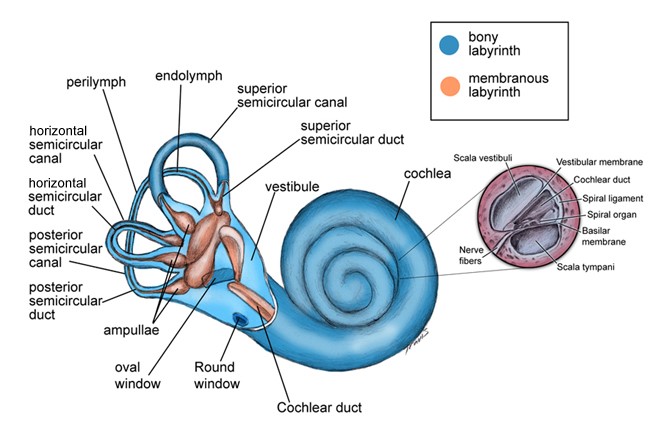
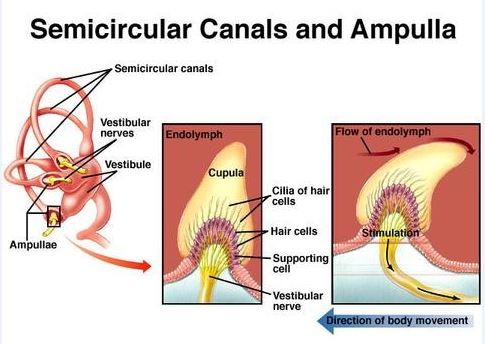
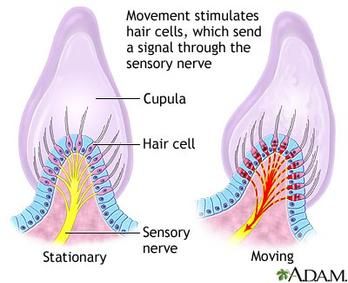
This system determines our sense of balance by measuring movement of the head in three directions. We can move in three directions because we live in a three dimensional world.
The semi circular canals of the vestibular system each sit perpendicular to one another. Together they allow us to sense different movements of the head such as nodding of the head ‘yes’, rotation, as in ‘no’ and tilting the head sideways like a bird.
Our posterior canal senses when we tilt our head from side to side. The superior canal senses when we nod the head forward and back, as in indicating ‘yes’, while the horizontal canal detects when we shake the head from side to side as in indicating ‘no’.
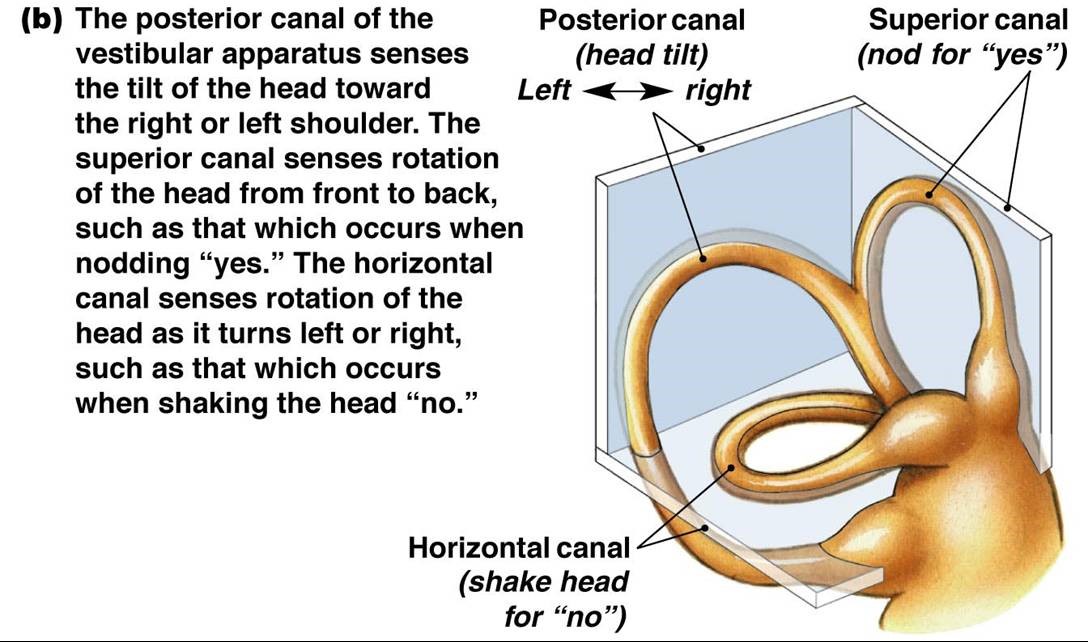
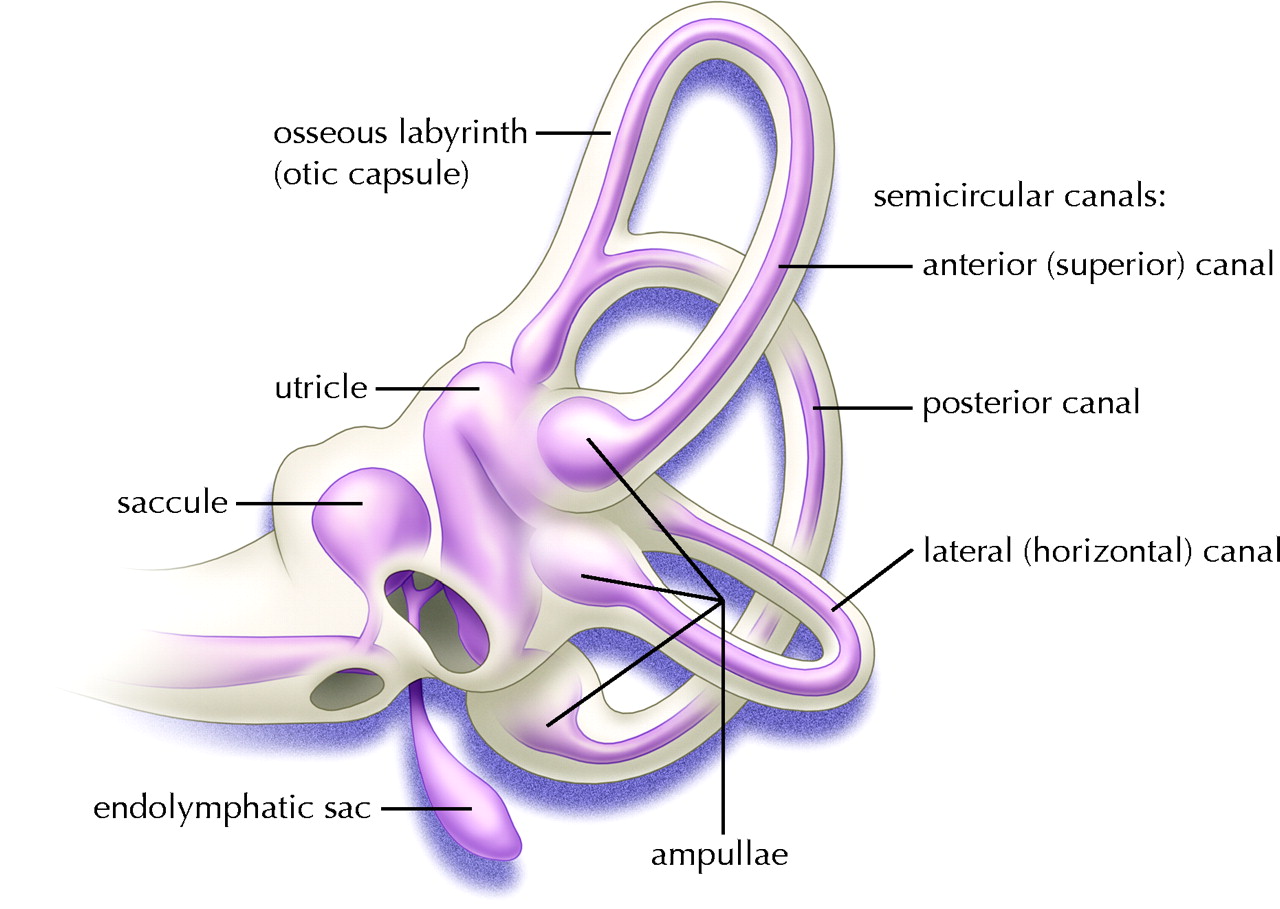
The vestibular system also includes two larger chambers which are called the utricle and the saccule. The utricle is sensitive to changes in horizontal movement, such as acceleration in a car. The saccule detects vertical movement such as ascending or descending in an elevator.

